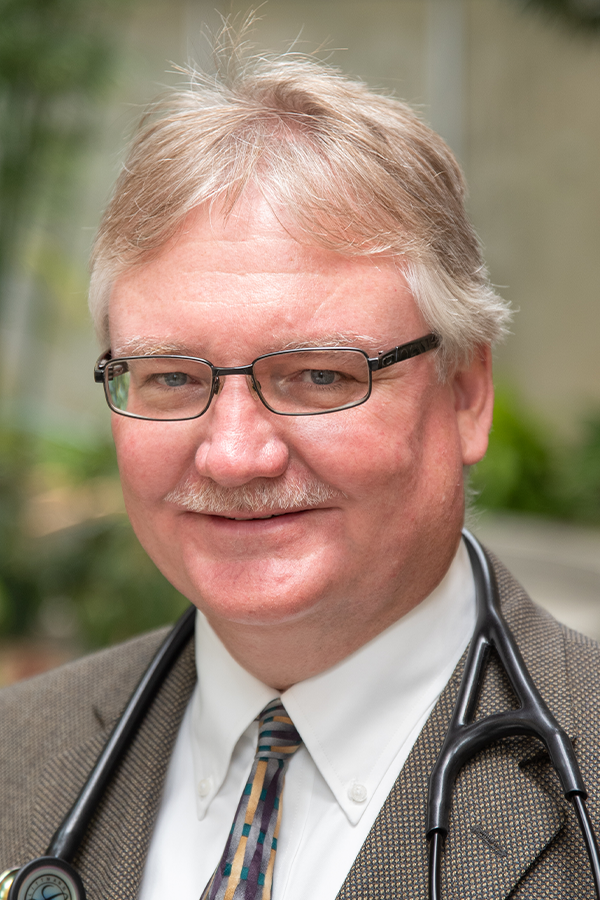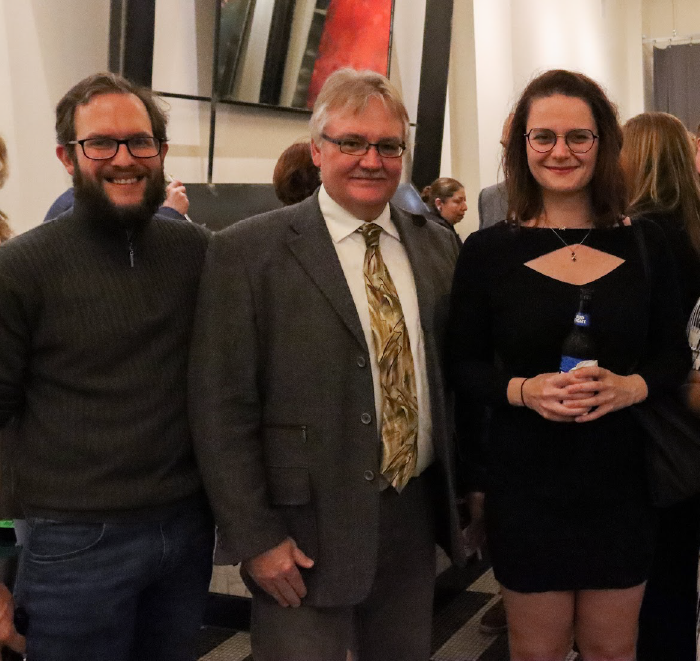Wed, 03/29/2023 - 15:55



Dr. Carlos Lowell is the current co-chair of the education committee and has served on several committees for the Clinical TMS Society over the past decade. Although he was born and raised outside of Buffalo, New York, he has spent most of his life in the Midwest. He earned his undergraduate degree at Ashland College in Ohio before attending medical school at Des Moines University in Iowa. He then went on to complete a psychiatric residency at the Medical College of Wisconsin before returning to Ohio, where he now runs the TMS Institute of Ohio in Sandusky.
There are three things you might not know about Dr. Lowell. First, he works with his wife Susan at the TMS Institute of Ohio. “[People] ask me what it’s like working with your spouse,” Dr. Lowell says with a smile. In fact, their relationship has always been intertwined with their careers. “We met in an inpatient psychiatric unit. I was just in my second year out of residency, and she was just starting hospital-based work as a social worker.”
Another thing you may be surprised to learn about Dr. Lowell is that he wants you to tackle your committee members! “Feedback is crucial,” Dr. Lowell says. “Go ahead and tackle your committee members when you’re at our Annual Meeting or PULSES. Tell us what’s working and what’s not working. Tell us what you thought was cool or can be improved…and what you would like to see moving forward.” In addition to co-chairing the education committee, Dr. Lowell also sits on the membership committee. “We understand that quality education is crucial to membership and the retention of members. Getting feedback has been a challenge over the past few years,” he says. He encourages general members to talk to committee members and leadership and share their feedback and recommendations.
The last thing you might not know about Dr. Lowell is that he loves to stay active outdoors and often goes on kayaking and snowmobiling trips. “Other than being a neuroscience geek and a shrink and a TMS guy, I like to get outside and have fun and move,” he says. “In the summer months, my wife and I do a lot of hiking…we’ve got pups so we’ll take them out on the trails.” Dr. Lowell’s found a way to keep a good work-life balance while still participating in as much Society work as he can. “Last year I was on a snowmobile trip and I had to log into a Clinical TMS Society meeting that evening. I put in 220 miles and I was up early and out to make sure I got back by 5:30,” he recalls. It wasn’t until he logged into Zoom that realized how bad his windburn was. “It didn’t look good,” he says with a laugh. “I had helmet hair, and I’m thinking, ‘This does not present a very professional look to my fellow colleagues!’”
Dr. Lowell has been a TMS provider since 2013. Prior to then, he did inpatient and outpatient psychiatric treatments including ECT for more than 20 years. He was working at a hospital when he met his wife Susan and would later become the only psychiatrist to serve as chief-of-staff there. He also serves as a professor of psychiatry at the Ohio University College of Osteopathic Medicine. He had been aware of TMS since the early 90s, but it wasn’t until some of the later studies came out that he really took notice.
“I remember tracking the literature along with ECT,” says. Dr. Lowell. “When [TMS] was FDA cleared in 2008 that perked my interest even further. Then Mark George’s study came out in 2010, independent of the Neurostar company…so I really started tracking it more,” he explains. “Finally, Linda Carpenter’s study came out in 2012, and that was kind of the tipping point because Linda’s study was a much more real-world study with patients staying on their meds [and] receiving therapy.” He felt the Carpenter study’s setting mirrored his own private practice and had better results. Dr. Lowell also had patients with treatment-resistant depression who would be looking for an alternative to ECT. “We had a lot of…high functioning professionals in our private office…these people didn’t want ECT. They didn’t want to be hospitalized for a month or two [and]…not be able to work or drive,” he explains. It was this combination of factors that led him to pursue TMS training.
Another reason Dr. Lowell decided to look into TMS is his self-proclaimed status as a neuroscience geek. “I could talk for hours off the top of my head about functional neuroanatomy,” he says. “TMS is a platform technology, so it’s not only for depression and other psychiatric conditions, but it’s also an important tool for research. One of the nice things about TMS is that we are learning more about how the brain works, and so our understanding of functional neuroanatomy, neurophysiology, and neuropathophysiology has markedly expanded over the past 20 years. That is super cool.”
Dr. Lowell opened his private practice in 1995 and added TMS in 2013 to create the TMS Institute of Ohio. “We were the fifth fully functional TMS program in the state of Ohio in 2013 …and it’s done incredibly well since.” He runs the institute with his wife Susan, who is a licensed clinical social worker as well as the TMS coordinator. “She had a very good therapy practice but also wanted to do something besides therapy…so it was a joint effort,” Dr. Lowell says. “My wife also had management experience, so she understands the regulations, billing, coding, all that type of stuff…She also conducts therapy with the patients and is a trained TMS technician.” However, working with a spouse is not without its challenges. “On the other side of that, she is my compliance officer, so it’s not always enjoyable!” he says jokingly. “Had it not been for her I would not have been able to get this program up and running and maintain it…She is really good at what she does, and the patients really like her.”
Shortly after starting his TMS practice, Dr. Lowell joined the Clinical TMS Society. “Cleveland and Toledo didn’t even have TMS programs [at the time],” Dr. Lowell says. “There was nobody for me to talk to. The Clinical TMS Society gave me an opportunity not only to learn but to sit down and talk to fellow TMS providers, which I did not have here. One thing I was impressed by…was how warm and inviting people were; how willing they were to share their experience and knowledge and advice.” In 2016 he joined the Clinical Standards committee. He then transitioned to the Membership committee in 2020 and joined the Education committee in 2021. “Last year in 2022, Mo and Randy asked me to become the co-chair of the Education [committee]. And that’s been a lot of fun. Sitting on the education committee, you learn a lot,” Dr. Lowell says. “There are some incredibly bright, talented people on the Education [committee] and PULSES. You learn a lot about TMS and current research, or research that’s not published yet…It’s nice to have that camaraderie with a really good group of people,” he says.
He encourages other members to join committees if they have the time. Although it can be a lot of work, he feels it’s a fun experience and an opportunity to learn and build connections. “There have been many times after [a meeting] when I’ll corner one of my fellow committee members and say ‘Hey, I need to talk to you. Have you seen this before?’” Dr. Lowell gives an example of a current case: “We have a [patient] who has an implantable device in her trabecular system in her eye, which is said to be MRI safe.” He asked fellow committee members if they had ever administered TMS to a patient in this situation, and a member emailed him back and confirmed they had done one case without any problems. “It’s nice to have these types of contacts where you can run questions past [them],” Dr. Lowell says. “Having these connections has been invaluable.” He also enjoys sharing his own expertise with other members however he can. When he lectured at the PULSES course in Sonoma, California, a fellow Society member had learned of his background in ECT and approached him with questions of their own. “It goes both ways. People help you out and you help out other people. It’s a lot of fun.”